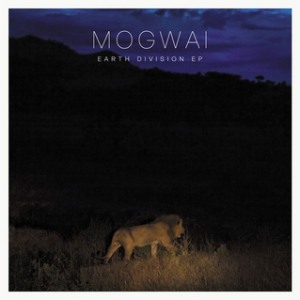
Earth Division is a test. What do I want from Mogwai? Do I want them to evolve? Do I want them to follow up “Music for a Forgotten Future (The Singing Mountain),” the 23-minute bonus track from Hardcore Will Never Die, But You Will that chose ambient textures over aggressive guitar? Do I want them to embrace the “post-” aspects of post-rock, the genre they disavow being part of? Or do I want them to continue plying their trade with well crafted, post-rock comfort food like “How to Be a Werewolf” and “Hasenheide”?
It’s a test I suspect I’m failing. At the end of my review of Hardcore Will Never Die, But You Will, I commended Mogwai for stepping out of their comfort zone on “Music for a Forgotten Future,” stating that it’s “time to take chances and expand [their core] identity.” Earth Division does just that. Relying on strings, not bruising riffs, the EP elevates the group’s prior orchestral leanings to center stage. There are no recapitulations of their trademark crescendo-core. In theory, these should all be emphatic plusses, signs that Mogwai can and will set aside their tried-and-true templates. In execution, it’s not so exciting.
The four songs are measured steps into foreign terrain. Opener “Get to France” favors careful piano, swelling strings, and reserved keys, eschewing Mogwai’s typical instrumental palette entirely. It’s more warning than lullaby, the future soundtrack to a scene in an indie drama where characters stare at each other with growing malice. “Hound of Winter” presents a chamber-pop version of Stuart Braithwaite’s prior successes with slow-core balladry (“Cody,” “Take Me Somewhere Nice”). “Drunk and Crazy” parries the digital world of distorted synths and the analog world of plaintive strings, eventually finding common ground. Finally, “Does This Always Happen?” brings back the carefully arranged guitar figures I’ve come to expect from Mogwai’s slow songs, but they’re used as a foundation for the more active work of the strings and piano.
What each of these songs adds to Mogwai’s sonic repertoire is more memorable than the song itself. I enjoy the approach of “Get to France,” but can’t help but thinking it would be more impressive as a segue into a massive rocker. I appreciate the arrangement of “Hound of Winter,” but its sentiment slips through my fingertips. “Drunk and Crazy” is a successful aesthetic experiment, but there must be a non-disclosure agreement for its melodies. The circular guitar melody of “Does This Always Happen?” has staying power, yet it’s the most familiar element on Earth Division.
I suspect I’m failing the Earth Division test because this is what I wanted from Mogwai. You can pull out multiple quotes to that effect. But now that I have it, I long for a meaty “Hasenheide,” “I Love You, I’m Going to Blow Up Your School,” or “How to Be a Werewolf” to sink my teeth into. The question I didn’t ask at the top was “Why can’t I get both?” I look back to the Mogwai EP and Rock Action as releases that took noticeable steps into foreign territory while retaining the melodic character that initially appealed to me in Mogwai’s music. Earth Division is best viewed as a tentative first step back into that mode, signaling greater rewards in the future.
|

The packaging for Explosions in the Sky’s Take Care Take Care Take Care is overwhelming. The double LP set is sheathed in a full-color slip-case displaying the ivy-choked door to their world. The hefty sleeve inside folds outward from a center panel with four wings: one side showcases the exterior of the house, the other covers the interior. If you ordered the vinyl directly from Temporary Residence Limited, you’ll have one of three sets of colored vinyl incased in weathered paper sleeves. The fourth side of the vinyl is etched with the floorboard design from the center panel. Along with the download code and a Temporary Residence catalog, you’ll find an antique-style postcard with the album’s credits. The kicker is the included poster: a nine-panel (36” x 36”) behemoth with tangled ivy/growths on one side and their muddy roots on the other that can serve as a mat for your EITS house play-set (action figures sold separately).
This packaging is thoroughly impressive, if not unprecedented. Post-rock bands have been known for going overboard on vinyl even before the recent resurgence in the format—remember the crushed penny in Godspeed You! Black Emperor’s F# A# Infinity?—but now it’s a trope of the genre. Few major releases from Temporary Residence, Hydrahead, and Mylene Sheath come without a gatefold sleeve and your choice of limited-run color vinyl. And with fans eager to collect all the variants, escalating the range of available options is a fiscal necessity.
It’s tempting to remind gotta-have-’em-all collectors that records are meant to be heard (glib response: “Duh, that’s why I bought an extra copy on black vinyl!”), but this stock retort nevertheless carries a kernel of truth. There’s a thin line between artwork which perfectly complements an album and artwork that overshadows an album. As floored as I am from the thoughtfulness of Take Care’s packaging, I haven’t said anything about its musical contents yet. With 28 panels of artwork to cover, can you blame me for skimping on the details?
What I keep wondering is why Explosions in the Sky have positioned themselves at the forefront of this packaging escalation. To use their native parlance, this isn’t their first rodeo. By the numbers, they’re the most popular instrumental post-rock band, with Take Care debuting at #16 on the US charts. (In comparison, Mogwai’s Hardcore Will Never Die, But You Will matched the group’s highest US chart position at #97.) This popularity is owed in large part to EITS’s soundtrack for Friday Night Lights, which gave the genre an enormous boost in visibility and ensured the use of troubled-yet-hopeful instrumental rock in television segments about high school football for years to come. In turn, that exposure made their stripped-down aesthetic (three guitars, drums, no vocals, little extraneous instrumentation) the blueprint for your town’s up-and-coming post-rock band. For a band of their stature, the packaging bundle for Take Care usually accompanies the high-priced special edition, not the standard vinyl offering.
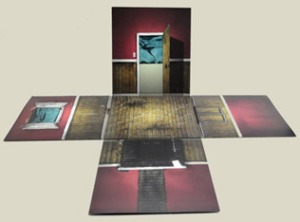
The question remains: Why go all-out? To one-up their packaging-crazed progeny? To give their wordless compositions the context that lyrics might otherwise provide? To reward fans who’ve stuck with the group from their early shows in college-town basements to their recent headlining gig at Radio City Music Hall? To demonstrate how seriously they take all aspects of their craft? Most likely it’s as simple as their in-house (pun unintended) artist Esteban Rey coming up with a great idea for the artwork and Temporary Residency signing off on it. (Once you’ve assembled Eluvium’s Life Through Bombardment 7LP book, anything else must seem like a relief.) Regardless of the specific why—I’m sadly not a mind-reader and I haven’t found an interview with the band that dives into the packaging angle—I’m left with a hefty package that says as much, if not more, about the state of Explosions in the Sky as its musical contents.
Here’s my potentially controversial assertion: Take Care’s artwork has to make a big statement about the group’s return from a four-year layoff because its music can’t make that statement on its own. Barring a stylistic sea change, Explosions in the Sky’s aesthetic won’t offer any surprises. It’s built on simple pieces—the affecting melodies of spiraling guitar leads, quickly strummed blocks of chords, skyward arcs of feedback, martial snare rolls—and its success comes in how those pieces fit together to elicit gut-punching emotions. But you know that trick already. It was clear when their high-water mark third LP The Earth Is Not a Cold Dead Place came out in 2003, and if it wasn’t, the 2004 Friday Night Lights soundtrack and subsequent emergence of EITS clones working with the same raw materials killed the mystery. That’s the price of heavy exposure and widespread influence: people will expect you to change the classic formula to compensate.
Yet EITS hasn’t shown a propensity for such seismic shifts in approach. The remix CD which accompanied 2007’s All of a Sudden I Miss Everyone offered an alternate-reality version of the album with predictably mixed results (although the Jesu remix of “The Birth and Death of the Day” is essential), but outsourcing your evolution is a cheat. The most you can reasonably expect from Take Care is a nudge in a slightly different direction, like the more prominent use of piano on the 2006 EP The Rescue and their 2007 LP All of a Sudden I Miss Everyone, but that’s not how earth-shaking statements of purpose are written. And for post-rock, such statements are essential for critical standing.
Like Mogwai, Explosions in the Sky views itself as a rock band, not a post-rock band, even though both groups operate within the boundaries of that subgenre. This distinction is key: rock bands can make fine-grained adjustments to their approach, like The National’s High Violet, and receive passionate acclaim, while sudden changes in course like Radiohead’s Kid A are more often met with quizzical looks if not dismissive glances. In comparison, post-rock bands are expected to evolve, since the nature of the genre is, supposedly, to keep moving forward. Having strong songwriting simply isn’t enough to offset the perceived need for change.
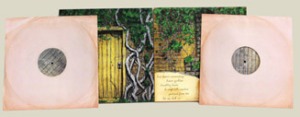
Is this situation fair to Explosions in the Sky? Should they have to switch to New Coke on their fifth proper LP? It’s not like they’ve flooded the market with material—prior to Take Care, they’d released fewer than 45 songs. They haven’t released anything approaching a bad record, and I sincerely doubt that they will. No, they’re not the most post- of post-rock bands, but that’s never been their appeal. It may seem out of character for a curmudgeon like me, but I feel for Explosion in the Sky’s predicament: either make a dramatic change and risk losing the essence of what you do, or maintain course and have that material be greeted with “more of the same.” It’s a familiar scenario for post-rock bands (lord knows I covered it in Mogwai Discographied), but Explosions in the Sky reached it in record time.
Let me go back to the artwork, since it provides the band’s answer to that quandary before the needle touches down on side A. The end product of all of those panels and the poster is an ivy-covered house. The mailbox is overflowing with letters, the ivy has worked its way around the bicycles, and the window and door are shut. Presumably, its occupants are cloistered within or just now returning from their journeys. When viewed from the inside, the open door and window show a distant tornado. My take-away from this artwork is that Explosions in the Sky are well aware of the dangers of the outside world—after all, they’ve previously gone through the destruction and renewal of The Earth Is Not a Cold Dead Place and the floods of All of a Sudden I Miss Everyone—but they’ve found safe haven and comfort from those dangers. Unless you’ve bank-rolled your career on misanthropy, “comfort” rarely signifies change. So what does this artwork accomplish?
Take Care Take Care Take Care’s artwork does two key moves. It deflates the need for a grand gesture from the music contained within by being its own grand gesture, then reinforces the stability of their sound, thereby negating the expectation of a major shift. Nothing here signals a journey into the unknown. Instead, you’re promised the loving embrace of home. Even if Take Care is “more of the same,” it’s the same you want. That’s a rather miraculous reversal of expectations.
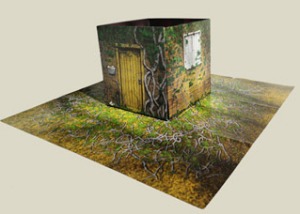
For the majority of its forty-six-minute runtime, Take Care is the same you want, provided, of course, that you want more of it. The most successful stretch of Take Care is side C, which features “Postcard from 1952” and “Let Me Back In.” These two compositions stretch out in familiar ways: lurking in quiet valleys, riding snare rolls and pounding toms through intense passages, relaying memorable melodies with intersecting guitar lines. The end results are as powerful as anything else Explosions in the Sky has recorded. The formula hasn’t changed, but it’s still paying dividends to committed investors.
Take Care does venture outside of base camp for a few reconnaissance missions. The patter of hand percussion gives depth to the muted arcs of “Human Qualities,” at least until it hits a distorted lead in the final minute. “Be Comfortable, Creature” thrives on deftly arranged strains of feedback. The biggest curveball is “Trembling Hands,” the three-and-a-half-minute advance single for the album which gets too much mileage out of an “Oh! Oh! Oh!” vocal chant. That new element overshadows a propulsive performance from drummer Chris Hrasky and an otherwise tidy condensation of their dynamic range.
That lone misstep is oddly reassuring. When you tore off the shrink wrap on Take Care Take Care Take Care’s packaging and built its house, you entered its comfort zone. Why wouldn’t the lone anomaly feel out of sync?
That’s the ultimate achievement of Take Care Take Care Take Care’s artwork. If you’ve put yourself in its context, Explosions in the Sky’s lose-lose dilemma turns into a win-win scenario. They’re rewarded for maintaining their genetic code and let off the hook for not evolving. That ruse doesn’t extend to the broader context—Those Who Tell the Truth Shall Die… and The Earth Is Not a Cold Dead Place still reign as the band’s essential albums—but unlike those albums, this one comes with a completely awesome house to build.
Oh, you bought the album digitally? Good luck with that one, pal.
|
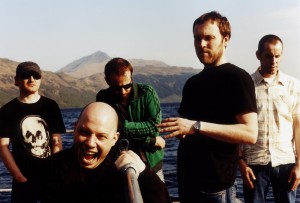
This post of rankings and ephemera wraps up Mogwai Discographied. If you’re wondering “What is Mogwai Discographied?” it’s a deep dive into the catalog of one of the foremost purveyors of post-rock. Consult the first nine parts of the series for the gory details: 1, 2, 3, 4, 5, 6, 7, 8, and 9. Each post tackles two or three entries in Mogwai’s catalog. If you’re not interested in reading 16,000+ words on Mogwai to figure out a starting point, the following list should help.
Rankings
I’ve ranked these albums/compilations with two considerations in mind: personal preference and best starting points. I’ve excluded lesser releases (singles and remix albums), and bundled the 4 Satin, No Future = No Education (Fuck the Curfew) and Mogwai EPs under EP+6, since that’s the most cost effective way to acquire those releases. Everything on this list is worth hearing at some point, but if you learn a single lesson from Mogwai Discographied, it’s that you should pace yourself when consuming Mogwai releases. Start with the top four, then progress down the list as your appetites allow.
- Young Team: Mogwai’s first full-length features towering highs (“Mogwai Fear Satan,” “Like Herod”), glorious guitar tones, and powerful dynamic range.
- Special Moves: A long-overdue live album for fans and a sampler platter for newcomers that excels in both departments. Get a version with the Burning concert DVD included.
- EP+6: This must-have three-EP compilation offers brass bliss (“Burn Girl Prom Queen”), fuzzed-out crescendos (“Small Children in the Background”), unrelenting noise (“Stereodee”), and whirring beauty (“Stanley Kubrick”).
- Rock Action: Mogwai’s shortest LP does not lack inspiration, loaded with fruitful forays into electronic (“Sine Wave”), folk (“Dial: Revenge”), and symphonic impulses (“2 Rights Make 1 Wrong”).
- Government Commissions: BBC Sessions 1996-2003: This compilation offers alternate views of known songs, a few of which (“Secret Pint,” “Like Herod”) are definitive versions.
- Ten Rapid: Collected Recordings 1996-1997: This compilation of Mogwai’s early singles exhibits their innate melodic touch and a greater reliance on open spaces.
- The Hawk Is Howling: Achieves length without excessive sprawl, in large part because of its exceptional last four songs.
- Mr. Beast: A 40-minute block of well-crafted songs (like the riff-machine “Glasgow Mega-snake”) that lacks the evocative mystery of Mogwai’s best works.
- Come on Die Young: A handful of extraordinary tracks (especially the slow-core ballad “Cody”) are brought down by an exhausting mid-tempo stretch.
- Hardcore Will Never Die, But You Will: Their newest album shows off a few new tricks (the motorik drive of “Mexican Grand Prix,” the ambient companion piece “Music for a Forgotten Future”), but mostly sticks to known terrain.
- Happy Songs for Happy People: This mostly subdued collection of songs never hits Mogwai’s top gear, but does provide some worthy additions to their catalog.
- Zidane: A 21st Century Portrait: A calming, if repetitive soundtrack that shows off Mogwai’s quiet side.
Ephemera
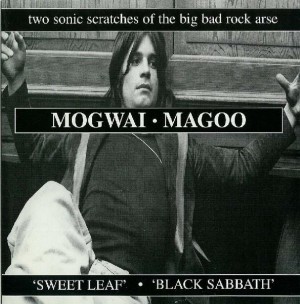
I’ve covered all of the key Mogwai releases in detail, but there’s plenty more to track down for the tireless completist. This list is not comprehensive, but it’s a good starting point for that journey.
“Sweet Leaf”: Mogwai reveal their fondness for Black Sabbath with this cover of Black Sabbath’s “Sweet Leaf,” which appeared on a split single with Magoo in 1998. Not their best vocal performance, but you can hear the influence of those slow, heavy riffs in countless Mogwai songs.
“Hugh Dallas”: Mogwai’s contribution to the Everything Is Nice 3CD compilation for Matador’s 15th anniversary is a haunting nine minutes of slow-core. Drifting along on Stuart Braithwaite’s hushed vocals and gentle strumming until the guitars crash down, “Hugh Dallas” is a lo-fi companion to Ten Rapid’s vocal tracks. Well worth hunting down.
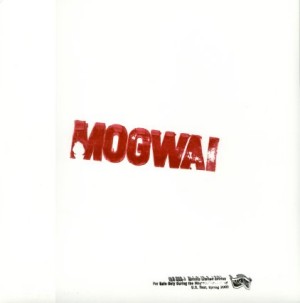
Split 10” with Bardo Pond: Two pleasantly mellow songs from a limited-edition tour EP. “D to E” drifts semi-aimlessly with its blurred guitar, keys, and trumpet. “Drum Machine,” a collaboration with The Remote Viewer, offers a subaquatic companion piece, with the titular element bumping quietly beneath the surface. These songs reappeared on Mogwai’s 2001 UK Tour Single. Neither is easy to find.
Japanese bonus tracks: Heeding to the tradition of adding bonus tracks to the Japanese pressings of their albums so consumers don’t just import the American versions, many Mogwai albums have received additional material abroad. Rock Action received two bonus tracks: “Untitled” is a longer take of “D to E,” while “Close Encounters,” a collaboration with David Pajo, is one of Mogwai’s mid-tempo, crescendo-free meditations. Happy Songs for Happy People offers “Sad DC,” which emphasizes Luke Sutherland’s mournful violin. The Hawk Is Howling has “Dracula Family,” an upbeat instrumental that would’ve made a nice b-side for “The Sun Smells Too Loud.” (This song also appeared on a Rock Action sampler.) Collect these songs and you’ll have a pleasant, if inessential EP of bonus material.
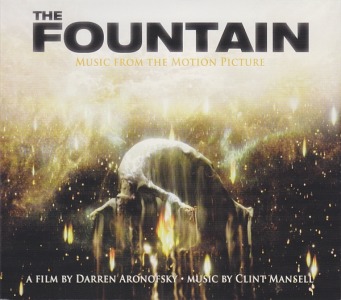
The Fountain soundtrack: Clint Mansell scored Darren Aronofsky’s ponderous 2006 sci-fi romance, recruiting the Kronos Quarter and Mogwai to perform it. Mogwai presumably contributes guitar arpeggios, foreboding textures, and drumming to “Holy Dread,” “Stay with Me,” and album/film centerpiece “Death Is the Road to Awe”—just don’t expect to proclaim “A lost Mogwai song!” The soundtrack holds up reasonably well without the film, but context won’t hurt. The Fountain tends to be a love/hate proposition, but I’m somewhere in the middle, enamored with the cinematography, set design, and boundless ambition, but aware of its repetitive structure, muddy thematic arcs, and the danger of such boundless ambition.
“Gouge Away”: Mogwai contributed a noisy and accented cover of the Doolittle favorite to the 2007 Dig for Fire: A Tribute to the Pixies compilation. It’s not astoundingly great, but it’s still a thousand times better than The Promise Ring’s line reading of the song for the prior Where Is My Mind? tribute (from which I recommend The Get-Up Kids’ energetic rendition of “Alec Eiffel”).
Fuck Buttons Split Single: Mogwai and Fuck Buttons toured together in 2008, releasing this split EP for the occasion and then issuing it on vinyl for Record Store Day 2010 in the UK. Mogwai contribute an excellent remix of Fuck Buttons’ “Colours Move” from their 2008 debut LP Street Horrrsing, while Fuck Buttons add buzzing synths and tribal drumming to their cover of “Mogwai Fear Satan.” Both songs are worth checking out, as is Fuck Buttons’ superb 2009 LP Tarot Sport, which picks up that “Mogwai Fear Satan” thread within their own aesthetic.
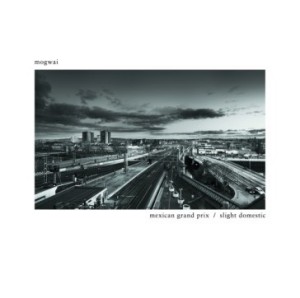
Hardcore singles: Mogwai’s newest album has garnered two singles: one domestic, one import. The Sub Pop single for “Rano Pano” offers “Hasenheide” on the flip, a charging, drum-driven rocker that carries a bit more emotional weight than its sonic counterpart on the album, “San Pedro.” The Rock Action single for “Mexican Grand Prix” features sleeve design reminiscent of Mogwai’s earliest singles and the b-side “Slight Domestic.” It’s a carefully crafted mid-tempo instrument midway between “Death Rays” and “Letters to the Metro.” I don't know where or how they'd fit on Hardcore, but arguments could be made for their inclusion.
Remixes: In addition to having their own songs remixed, Mogwai has returned the favor on a number of occasions. Here are some notable ones:
- David Holmes’ “Don’t Die Just Yet”: Most notable for pulling the rhythm section from Slint’s “Good Morning, Captain,” this remix also offers a climax of distorted guitar. Fellow Scots Arab Strap also remixed this song.
- The Paradise Motel’s “Drive”: The original version of The Paradise Motel’s cover of The Cars’ classic single features tasteful strings and reserved female vocals, but Mogwai’s reworking is a brilliant bit of ambient drone with garbled vocals.
- Bloc Party’s “Plans”: They retain most of the rolling rhythms of the original, but slice up the vocals and exchange the rousing guitar melodies for squelched-out electronics. Mogwai also remixed “Biko” from Intimacy, but my patience for Bloc Party wore thin after Silent Alarm.
- The Twilight Sad’s “The Room”: Mogwai take the yearning ballad from Forget the Night Ahead and add fuzzed-out guitar textures and a tinny drum machines. “The Wrong Car” alone is worth the price of its 12", so consider this track a major bonus.
- Errors’ “Supertribe”: Mogwai pay Errors back for their excellent version of “Auto-Rock” with a darker, more club-friendly take for Celebrity Come Down with Me that excises the insistent synth melody of the original for some morse code bleeps.
I’m currently determining the subject of the next round of Discographied, but I can tell you one thing: it will not be a contemporary post-rock band.
|
|
Welcome to the last official part of Mogwai Discographied. This entry covers their two newest releases: the 2011 album Hardcore Will Never Die, But You Will and the accompanying Home Demos EP. If you'd like to catch up, part one covers Ten Rapid and the 4 Satin EP, part two covers Young Team and Kicking a Dead Pig / Mogwai Fear Satan Remixes, part three covers the No Education = No Future (Fuck the Curfew) EP and Come on Die Young, part four covers the Mogwai EP and their entry in the Travels in Constants series, part five covers Rock Action and My Father My King, part six covers Happy Songs for Happy People and Government Commissions: BBC Sessions 1996-2003, part seven covers Mr. Beast, the singles for Friend of the Night, and Travel Is Dangerous, and the soundtrack for Zidane: A 21st Century Portrait, and part eight covers The Hawk Is Howling, the Batcat EP, and their live album Special Moves. Next time I'll wrap things up with album rankings and ephemera.
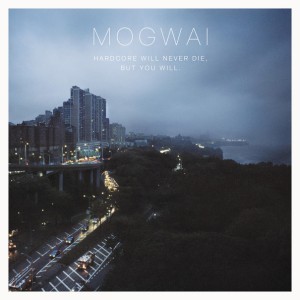
Hardcore Will Never Die, But You Will – Sub Pop, 2011
Highlights: “You’re Lionel Ritchie,” “Mexican Grand Prix,” “How to Be a Werewolf,” “Music for a Forgotten Future (The Singing Mountain)”
Low Points: “Rano Pano,” “White Noise”
Overall: Want to know why it’s so difficult to write about every Mogwai release? They’re too consistent. My least favorite of their full-lengths to date (Come on Die Young and Happy Songs for Happy People) are still good records in the grand scheme of things. Put those records against other post-rock records released in 1999 and 2003 and they’ll hold their own. Upon release, I’ve spun each Mogwai album countless times. They’re approachable, solid records. Barring unreasonable hype or the endless hope for a new “Mogwai Fear Satan,” you know what to expect and you get it.
In a large enough sample set, however, such predictability is exhausting. Aside from Kicking a Dead Pig / Mogwai Fear Satan Remixes, I can’t cite a single Mogwai release with a disastrous turn. The best I can do is nitpick: Come on Die Young drags in the middle; Happy Songs for Happy People and Mr. Beast lack transcendent highlights; Zidane is repetitive; “The Sun Smells Too Loud” doesn’t fit The Hawk Is Howling’s mood. Nitpicking is tedious. But that’s what you can do with a body of work that offers a consistent return by taking few risks.
I was spoiled, in a weird way, by the risks taken by Discographied’s first subject, Sonic Youth. Say what you will about NYC Ghosts & Flowers, but it’s not a retread of A Thousand Leaves. I didn’t care for The Eternal, but damned if it’s not a 180 from Rather Ripped. Each Sonic Youth record changed my perception of the group. I may have hated particular songs or releases, but they each offered something new to hear and write about.
Mogwai’s changed from album to album, but it’s never been drastic. They take measured risks—an increased reliance on electronics here, shorter song structures there—but nothing that threatens their core identity. They play it safe, bolstering their repertoire with more album highlights to add to their live set (not to mention 2018’s The Specialist Moves). Part of me itches for a NYC Ghosts & Flowers left-turn, whatever that might be. A Mogwai punk album. A Mogwai ambient album. A Mogwai stoner metal album. Doing something on a lark, even an EP of “Travel Is Dangerous”-style rock songs, would be greatly appreciated, even if it fails. Then they could go back to being Mogwai, that branded entity of rock-post-rock, and I’ll hear it with fresh ears.
Whether you have fresh ears will likely determine your enthusiasm for the superbly titled Hardcore Will Never Die, But You Will. Aside from one lengthy bonus track, it offers a few minor surprises, but is essentially a reassurance that Mogwai is good at being Mogwai. As a whole, it’s a hybrid of their last three albums, pulling Happy Songs’ electronic vocals, Mr. Beast’s concise rockers, and The Hawk Is Howling’s sense of space.
I was initially taken by the songs that deviated from the usual approach, most of which appear at the beginning of the album. Opener “White Noise” is a cosmopolitan update of “Auto-Rock,” bright colors and chipper melodies piloting its gradual ascent, but the song’s construction is the new touch. Much like Polvo’s “Beggar’s Bowl,” the foundational guitar loop in “White Noise” remains even as more layers are piled on. The Neu!-aping click track and programmed beat of “Mexican Grand Prix” signals a foray into Krautrock, but Luke Sutherland’s (of Long Fin Killie) hushed vocals overtake the digitized voices as Martin Bulloch kicks the song into gear. The fuzzed-out melody of “Rano Pano” feels like a different band (Mogwai favorites Bardo Pond?), but the new texture is welcome. Skipping to the middle of the album, “George Square Thatcher Death Party” is an up-tempo, bass-driven rock song with vocals cloaked by vocoder.
The rest of Hardcore is more familiar. “Death Rays” is a mid-tempo, piano-led track akin to a few songs on The Hawk Is Howling. Its buzzing riff hits a higher gear than “Daphne and the Brain,” but it occupies a similar space. “San Pedro” is a menacing, locked-in instrumental like “Glasgow Mega-Snake” or “Batcat.” With its brushed drumming and pedal steel, “Letters to the Metro” is a lilting throwback to the Come on Die Young and Mogwai EP. “How to Be a Werewolf” is filled with positive, surging melodies, like “The Sun Smells Too Loud” done right. The final two tracks, “Raging to Cheers” and “You’re Lionel Ritchie,” restructure the dynamic rockers found on Hawk by starting with head-fakes at Mogwai’s quiet reserve mode, but sure enough, each song hits its peak with a mammoth, cathartic riff.
Like every Mogwai album before it, Hardcore Will Never Die, But You Will has spent considerable time on my turntable. During that time, my initial fondness for the “new” Mogwai songs dissipated, while my appreciation for the tried-and-true Mogwai songs increased. I like the approach of “White Noise,” but it lacks the heart of their best openers. I enjoy the fuzzed-out guitar texture of “Rano Pano,” but I’m absolutely sick of its sing-song melody. “George Square Thatcher” probably rules in concert, but it lacks staying power on record. “Mexican Grand Prix” holds up the best of those, thanks in large part to Sutherland’s vocals. (Perhaps he can front that EP of Mogwai rock songs.) In contrast, “San Pedro,” “Letters to the Metro,” “How to Be a Werewolf,” and “You’re Lionel Ritchie” have emerged as highlights. They fit existing templates from Mogwai’s catalog, but damned if they don’t hit the spot. Along with "Mexican Grand Prix," those are the songs I’d like to hear on The Specialist Moves.
Hardcore Will Never Die, But You Will’s biggest risk comes on a bonus track, available on the 2CD edition and as a download with the vinyl. “Music for a Forgotten Future (The Singing Mountain)” is Mogwai’s soundtrack for an art installation, a 23-minute-long piece which forgoes percussion for most of its runtime in favor of ruminating guitar feedback, music box chimes, muted keys, and solemn violin. Brainwashed calls it the best thing Mogwai’s ever done, which is an overstatement, but I’m pleased by Mogwai’s willingness to step out of their comfort zone. The melodic and tonal shift approximately twelve minutes in and the string coda are each impressive moves, more reminiscent of Stars of the Lid than the rest of Hardcore.
It’s a shame “Music for a Forgotten Future (The Singing Mountain)” is a footnote for Hardcore Will Never Die, But You Will rather than an integral piece. There’s nothing wrong with Hardcore—it offers the same mix of styles as their last four full-lengths—but its position within Mogwai’s catalog is defined by its relation to those other titles. If you want more Mogwai, here’s more Mogwai. Guess what? The best songs are stereotypically Mogwai. But “Music for a Forgotten Future” hints at something else, a tantalizing proposition after listening to the group’s entire catalog over the past months and getting a concrete sense of Mogwai’s core identity. It’s time to take chances and expand that identity.
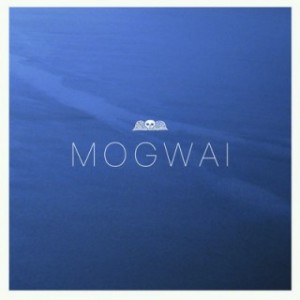
Home Demos – Rock Action, 2011
Highlights: “You’re Lionel Ritchie,” “How to Be a Werewolf”
Low Points: “San Pedro”
I’ve mentioned alternate takes again and again in Mogwai Discographied, preferring earlier versions of “Xmas Steps,” “Helps Both Ways,” and “My Father My King,” but none of those tracks qualify as home demos. That distinction makes this EP—an additional 12” included with the limited-edition box set for Hardcore Will Never Die, But You Will—a unique (if expensive) look into Mogwai’s creative process.
Most of Mogwai’s typical artifice is stripped away here. A drum machine fills in for Martin Bulloch. The tracks mostly lack the biting and beautiful guitar tones of Mogwai’s full-lengths. Mogwai’s thrived on craft since Come on Die Young, so hearing their music without the usual polish is disarming.
Home Demos offers early versions of five of Hardcore’s tracks. “Mexican Grand Prix” is significantly different, going exclusively electronic in its embryonic version. The album version initially sounded like a dramatic change of pace for Mogwai, a Neu! homage that twists Luke Sutherland’s breathy vocal underneath his digitized counterparts, but in comparison to this demo it sounds a thousand times more like a Mogwai Song TM. “George Square Thatcher Death Party” sounds like a demo, trading the album version’s muscular rhythms for some lo-fi drum machines. “San Pedro” follows suit, a simple drum beat plugging away as a tinny rendition of the album version’s guitars run through the same motions. “How to Be a Werewolf” benefits from more open space, its clean guitars coming much closer to Mogwai’s standard palette. It never blooms into triumphant hues, but its restraint is pleasant company. “You’re Lionel Ritchie” puts away the drum machine, letting the guitar interplay stand alone without percussion. The full crush of distortion never arrives, but the intimacy is appreciated.
Here’s the takeaway on Mogwai’s creative process from Home Demos. First, Martin Bulloch’s absence from the demo stage limits his flexibility in the finished product. He doesn’t cut loose in the Hardcore version of “San Pedro” because the song is written upon a drum machine pattern, not his playing. Second, Mogwai is capable of a purely electronic song like “Mexican Grand Prix”—and that song and “George Square Thatcher” didn’t start with clean vocals. Finally, Mogwai’s best melodies come from two or three members writing complimentary pieces in a single room, as shown on “How to Be a Werewolf” and “You’re Lionel Ritchie.” If only these mostly obvious points came a bit cheaper.
|
|
If you'd like to catch up, part one covers Ten Rapid and the 4 Satin EP, part two covers Young Team and Kicking a Dead Pig / Mogwai Fear Satan Remixes, part three covers the No Education = No Future (Fuck the Curfew) EP and Come on Die Young, part four covers the Mogwai EP and their entry in the Travels in Constants series, part five covers Rock Action and My Father My King, part six covers Happy Songs for Happy People and Government Commissions: BBC Sessions 1996-2003, and part seven covers Mr. Beast, the singles for Friend of the Night and Travel Is Dangerous, and the soundtrack for Zidane: A 21st Century Portrait. This time I tackle the pleasant surprise of 2008's The Hawk Is Howling, the Batcat EP, and their exceptional 2010 live album Special Moves
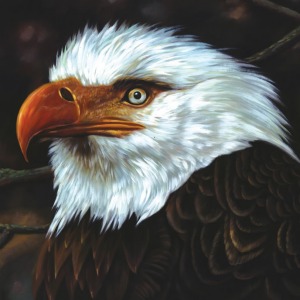
The Hawk Is Howling – Matador, 2008
Highlights: “I Love You, I’m Going to Blow Up Your School,” “Scotland’s Shame,” “The Precipice”
Low Points: “Daphne and the Brain,” “The Sun Smells Too Loud”
Overall: Like every Mogwai album since Rock Action, the response to The Hawk Is Howling was mixed. Pitchfork slammed it with a 4.5. NME doubled that score with a 9/10. Dusted calls it “subtle, but very much worth exploring,” which is an improvement from their takedown on Mr. Beast. The arm-wrestling competition between “a return to form” and “no, not more of this form” came to a standstill. There was one crucial detail to all of this waffling, however, and that was the repeated comparison to Young Team.
This comparison came easily, given the 2CD/4LP reissue of Young Team in the summer preceding the release of The Hawk Is Howling, but that wasn’t the only prompt for the comparison. Mogwai returned to Chem19 studios, last used for the No Education = No Future (Fuck the Curfew) EP and brought along Young Team co-producer Andy Miller. With ten songs stretching past 63 minutes, The Hawk Is Howling is Mogwai’s longest official LP since Come on Die Young. Finally, it’s entirely instrumental, which some critics bizarrely cited as a return to the group’s roots, even though all of their previous albums had vocals of some sort.
Young Team is my favorite Mogwai album, but I learned to ground my expectations after the Mr. Beast / Loveless fiasco. The Hawk Is Howling is more like Young Team than anything since Come on Die Young, but it’s also informed by those subsequent albums. It’s not a pure trip down memory lane, nor would I want it to be. But the approach of stretching out without getting bogged down in sprawl is welcome after three comparatively tidy LPs. I’m ready for a long Mogwai album again, even if that means sifting through some less interesting passages.
The first half of The Hawk Is Howling is a mixed bag. “I’m Jim Morrison, I’m Dead” (which prompted this amusing t-shirt) begins as typical quiet Mogwai, but builds into a dramatic peak in its second half. I could dismiss it as a recapitulation of “Sine Wave” and “Auto-Rock” with faux-strings replacing the dominant electronics of the former and the pared-down palette of the latter, but the moment when the faux-strings, frenzied guitar strumming, and piano align is undeniably effective. “Batcat” revisits the undertow riffage of Mr. Beast’s “Glasgow Mega-Snake,” capping off its final minute with a blistering assault led by Martin Bulloch’s most fearsome drumming in ages. “Daphne and the Brain,” a mid-tempo track that’s gradually taken over by IDM textures and fluttering beats, doesn’t make much of an impression. “Local Authority” thrives on open space and muted emotions, showing how a bit of the Zidane approach can go a long away. “The Sun Smells Too Loud” is atypically bright, a jaunty, melodic track that weaves an insistent guitar figure through layers of synthesizer and programming. It was released as the advanced .mp3 for Hawk, which made sense in that it’s a friendly, catchy song, but its cheerful tone sticks out on the reserved Hawk. It would have made more sense as a non-album single. The mathematically incorrect first half of Hawk concludes with “Kings Meadow,” another mellow track that forgoes percussion to give more space to its graceful arrangement of piano and guitar lines. It’s too bad they filled some of that space with intrusive electronic twinkling. That tendency for out-of-place IDM textures is my least favorite element of the album.
The Hawk Is Howling concludes with a fantastic four-song stretch. “I Love You, I’m Going to Blow Up Your School” has the best dynamic range from both production and performance standpoints since the No Education version of “Xmas Steps.” It’s not just the barely audible bass line that starts the song; it’s how the restrained calm of the first “verse” ratchets up the tension. By all means it should be louder, should pick up speed faster, but Mogwai’s committed to the plan. When the barricades finally break and the scraggly guitar lines blow up the school, it feels remarkably natural and yet still terrifying. “Scotland’s Shame” shows similar patience with its eight minutes, taking the blurred guitar and humming organs from their Zidane soundtrack and building them into a death march. The floating chimes of “Thank You Space Expert” nails Mogwai’s calm side, cresting weightlessly like the song’s title suggests. Hawk closes out with “The Precipice,” another pitch-perfect dynamic rocker like “I Love You, I’m Going to Blow Up Your School,” but with the nasty edge of “Like Herod” or Mr. Beast’s “We’re No Here.” The drop-out to just the main riff at 4:10 is particularly devastating. These four songs make up one of the best 30-minute stretches in Mogwai’s catalog.
But what about The Hawk Is Howling as a whole? Unlike Come on Die Young, which plods through its mid-album bloat, The Hawk Is Howling isn’t weighed down by the slight missteps in its middle section. Would the album be tighter and more consistent if “The Sun Smells Too Loud” and “Daphne and the Brain” became the A and B sides of a non-album single, or if one of “Local Authority” and “Kings Meadow” slipped to a b-side? Sure. But as-is, I can listen to all of The Hawk Is Howling without looking at the clock.
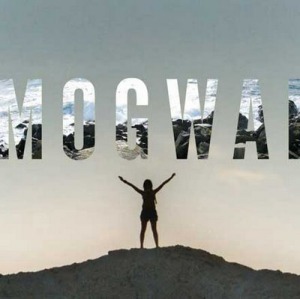
Batcat EP – Matador, 2008
Overall: There are three reasons to purchase the Batcat EP. First, you want very much to own a song called “Stupid Prick Gets Chased by the Police and Loses His Slut Girlfriend.” I do not blame you. It is an awesome title. You can easily overlook how its tense electronic tinkling isn't memorable enough to merit inclusion on The Hawk Is Howling. Second, you’d like to hear psych-rock pioneer Roky Erickson (of the 13th Floor Elevators) croon along with a typically melancholic Mogwai song, “Devil Rides.” Erickson’s textured, weathered voice imbues lines like “Did you miss me? I seemed so sure / The days seem longer, now you're gone” with a learned sadness. Finally, if you get the twelve-inch pressing, there’s a lovely shot of some trees at night in the inside of the sleeve.
Frankly, I wish there were more reasons to recommend it, but Mogwai’s getting stingy with the EPs lately. Batcat came out two weeks before The Hawk Is Howling. That’s not enough time to be a proper teaser. At the very least, cram it with material. “Batcat” fills an entire side of 180 gram vinyl and it’s the album version of the song. It’s not like I’m going to skip out on the album.
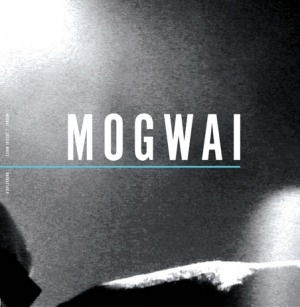
Special Moves – Rock Action, 2010
Highlights: “Mogwai Fear Satan,” “Glasgow Mega-snake,” “2 Rights Make 1 Wrong”
Overall: The release of Special Moves prompted Mogwai’s inclusion in Discographied, and if I valued punctuality in the slightest, it would have made a marvelous conclusion for the series. Writing about every major Mogwai release was far more tedious than I expected, but Special Moves reminds me why I’m a Mogwai fan. It’s as close to a greatest-hits compilation as you’re likely to get from the band and a vital document of their live show. It’s also a valid starting point for newcomers. The only people who won’t like this album are jerks. And I’m a jerk, so even that theory is out of the window.
Recorded during a three-night stint at The Music Hall of Williamsburg, Special Moves spans from Ten Rapid to The Hawk Is Howling. Their albums, minus Zidane, are each represented, and it’s hard to take umbrage with any of the selections. My dream set list would run four hours and include “Stanley Kubrick,” “My Father My King,” “Ex-Cowboy,” “Tracy,” “Christmas Steps,” “Small Children in the Background,” “Sine Wave,” Superheroes of BMX,” and “Travel Is Dangerous,” but I won’t admit that’s an unreasonable request for a live album. What I will admit is that the songs Mogwai chose for Special Moves are worthy of inclusion.
Opener “I’m Jim Morrison, I’m Dead” is free of the canned strings of the Hawk recording, and sounds considerable more powerful in the live setting. It leads into the elegant piano melody of Mr. Beast’s “Friend of the Night,” which flows naturally into the mid-tempo vocoder coos of Happy Songs’ “Hunted by a Freak.” It’s an excellent, if slightly restraint start, but things only get better from here.
The show-stopping moment comes in “Mogwai Fear Satan,” which shouldn’t be a surprise given the relentless praise I’ve given that song throughout this feature. After a familiar open demonstrating its brute force, glistening guitar textures, and floating melody, “Mogwai Fear Satan” lulls you to sleep for almost three minutes. It’s a simple, brutally effective trick. Shifting from near silence to raging storms, Mogwai jolt into top gear, with Martin Bulloch drumming like a man possessed. What impresses me so much about this take on “Mogwai Fear Satan” is that it shows Mogwai’s compositional flexibility in the live setting. Between trimming four minutes from the original run time, restructuring the song for maximum shock value, and adding live-wire guitar improvisations, “Mogwai Fear Satan” underscores what’s great about the original without sounding like rote rehearsal.
Things calm down with Come on Die Young’s slow-core ballad “Cody,” which looses up a bit from the austere beauty of the Government Commissions take. Rock Action’s “You Don’t Know Jesus” is a welcome inclusion, bringing some piercing feedback to the peaks of its crescendos. Happy Songs’ piano-led instrumental “I Know You Are but What Am I” is given a makeover with squelching, pitch-shifted leads, but its carefully constructed underbelly remains intact. The Hawk Is Howling highlight “I Love You, I’m Going to Blow Up Your School” hits both ends of its dynamic range on the nose, especially the introspective calm of its 90-second intro.
The home stretch of Special Moves starts with Rock Action’s centerpiece “2 Rights Make 1 Wrong.” Without studio trappings like banjo, horns, and a choral arrangement, the live take relies on aggressive drum pads, angling scythes of guitar, and Barry Burns’ digitized vocals to hit its fever pitch. Young Team’s “Like Herod” makes its mandatory appearance in any collection of Mogwai live songs, coming in at a svelte ten-and-a-half minutes. It’s not the end-all, be-all take from Government Commissions, but it fits in here nicely and doesn’t overstay its welcome. Special Moves proper concludes with a pummeling rendition of Mr. Beast’s “Glasgow Mega-Snake,” suggesting that Mogwai can, in fact, close a show without twenty minutes of distorted wreckage.
Special Moves comes with an encore of sorts: six songs included either on the fancy 3LP edition or as downloads with the standard set. Those selections—“Yes! I Am a Long Way from Home,” “Scotland’s Shame,” “New Paths to Helicon, Part 1,” “Batcat,” “Thank You Space Expert,” and “The Precipice”—lean heavily on The Hawk Is Howling, but that’s hardly a surprise given which album they were currently promoting. They certainly chose the best six songs to include from that album. Of the “encore” set, “Helicon 1” is the clear highlight, a staring-into-the-sun dose of blissful guitar noise.
Some editions of Special Moves also include a concert film from Vincent Moon and Nat Le Scouarnec called Burning. If you’re hoping for uncut takes of every song from Special Moves, Burning will be a head-scratcher. It includes parts of eight songs from Special Moves (four from the main set, four from the “encore”), so you get the woozy highlights of “Mogwai Fear Satan” and “Like Herod” stitched together without their lengthy build-ups along with a few full-length songs. ("Mogwai Fear Satan" is included in its entirety as a bonus feature.) The selling point for Burning is its black-and-white cinematography, which captures both the band and the audience with nicely framed shows loaded with shadows and intentional grain. I’ve come around on the editorial approach; I’d prefer to have 47 minutes of material filmed like this than two hours of static shots. (If you want two hours of aesthetic-free static shots, consult the DVD for Mono’s otherwise commendable Holy Ground: Live from NYC with the Wordless Music Orchestra.)
Special Moves makes me wish I’d caught Mogwai on every available tour, not just twice in Chicago in 1999 and 2001. (I also had planned concerts in Boston from 1998 and 2008 cancelled because of a flooded Middle East and Martin Bulloch’s pacemaker scare, respectively.) It has me chomping at the bit for their show here in two weeks. If my past experiences and Special Moves are any indication, they’ll play their best songs, improve the highlights from their most recent album, and leave me wondering how I could ever find so much to nitpick with Mr. Beast and Happy Songs for Happy People—provided, of course, that they only play the best two songs from each. If you have a chance to catch them, certainly do so. If not, Special Moves/Burning is an excellent substitute.
|
|
If you'd like to catch up, part one covers Ten Rapid and the 4 Satin EP, part two covers Young Team and Kicking a Dead Pig / Mogwai Fear Satan Remixes, part three covers the No Education = No Future (Fuck the Curfew) EP and Come on Die Young, part four covers the Mogwai EP and their entry in the Travels in Constants series, part five covers Rock Action and My Father My King, and part six covers Happy Songs for Happy People and Government Commissions: BBC Sessions 1996-2003. This time I cover the infuriating mix of overblown expectations and moderate rewards of Mr. Beast, its two fans-only singles for Friend of the Night and Travel Is Dangerous, and their soundtrack for Zidane: A 21st Century Portrait.
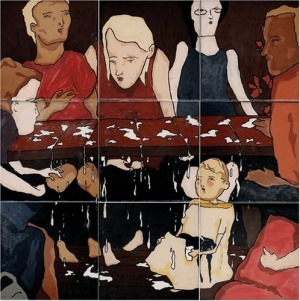
Mr. Beast – Matador, 2006
Highlights: “Glasgow Mega-Snake,” “Auto-Rock,” “Friend of the Night,” “Travel Is Dangerous”
Low Points: Nothing egregious, but I’ll name “Emergency Trap” and “I Chose Horses” as the weakest links
Overall: After the underwhelming Happy Songs for Happy People, my expectations for Mogwai were at an all-time low. Yet Alan McGee, founder of Creation Records, managed to perk up my ears by calling the forthcoming Mr. Beast “probably the best art rock album I've been involved with since Loveless. In fact, it's possibly better than Loveless.”
Better than Loveless, you say?
Now McGee’s both a hyperbolic fellow and Mogwai’s manager at the time, so the logical inclination is to take a statement like that with a grain of salt, but damned if it didn’t get my hopes up. Sadly, Mr. Beast is no Loveless. That point of comparison is absolutely baffling to me, since Mr. Beast is a tidy, effective condensation of what Mogwai’s done to date, not a vast leap forward. Not a genre-defining classic. Not an aesthetic touchstone for decades to follow. McGee’s claim did a massive disservice to Mogwai, since it stresses what Mr. Beast lacks and glosses over its strengths.
Mr. Beast’s strengths and weaknesses boil down to a single word: professionalism. Mogwai’s songs have never been so carefully honed, so diligently arranged. Back on Ten Rapid and Young Team, Mogwai were not nearly this meticulous. “New Paths to Helicon (Pt. 2)” is wonderfully minimal, just a few guitar lines winding together over a casual drum beat. “Tuner” is intimate and hushed. Stuart Braithwaite’s mumbled “Talked to cats for a while” is chillingly lonely. “Tracy” finds heartbreak in the spaces between the glockenspiel melody. Even their towering achievement, “Mogwai Fear Satan,” is built around three chords. These songs aren’t marvels of individual technical achievements (although Martin Bulloch slays on “Satan”), but they’re effective compositions. Yet as each album passed, those gaps were shaded in. They wrote more intricate arrangements, incorporated all five members equally, and brought in more collaborators. They became professionals.
By all means, Mogwai should be taking their craft seriously on their fifth proper LP. They should be professionals. If they’d continued to wing “Katrien” knock-offs, I wouldn’t be writing this piece. But this professionalism can be hard to love. The simple gaps and open spaces are few and far between, providing fewer jumping-off points for my imagination. Dusted Magazine’s scathing review of Mr. Beast closes with the assertion that, unlike Loveless, “there is no mystery - everything is on display.” While I don’t share Jon Dale’s spite for the material (or his considerably more esoteric taste in music), I can see his point. Post-rock, theoretically at least, requires such mystery. The usual absence of vocals/lyrics means that there’s no dominant interpretation of what the song is about. Instead, you fill in those gaps, provided that they exist. That’s the brilliance of “Mogwai Fear Satan” and the limitation of Mr. Beast.
Perhaps if Alan McGee hadn’t mentioned “art rock” or Loveless and instead claimed that Mr. Beast is Mogwai’s most rock-rock album, I would have initially viewed the record differently. There may not be a ton of mystery, but every one of these songs has something to offer and they all fit together as a solid album. Piano-driven opener “Auto Rock” is a forceful restructuring of Rock Action’s “Sine Wave,” recalculating its graphical plot into a straight diagonal between X and Y. The pounding drum beat is savagely effective. “Glasgow Mega-Snake” is a compact rocker with their meanest harmonic-laden riffs to date. “Acid Food” merges the hushed Braithwaite vocals and lap steel of “Cody” with the drum machines and gurgled electronics of Rock Action and Happy Songs for Happy People. “Travel Is Dangerous” is their most straightforward vocal indie rock song, closest to Aereogramme’s charging rockers. It’s hard to imagine Braithwaite having the confidence to pull “Travel” off on any prior Mogwai release. “Team Handed” improves those mid-tempo Come on Die Young songs with a longing melody and intrusive electronic touches. “Friend of the Night” frames one of their most polished piano melodies with blurred guitar and humming synths. The melancholy “Emergency Trap” floats by pleasantly. At 3:34, “Folk Death 95” is the tidiest condensation of Mogwai’s dynamic range here, hitting both the carefully arranged valleys and the textured guitar noise peaks. “I Chose Horses” features spoken Japanese vocals from Envy singer Tetsuya Fukagawa (who apparently traded his appearance for the right to completely rip off “Helicon One” for Envy’s “Further Ahead of Warp” from Insomniac Dose). Album closer “We’re No Here” is a bruising, six-minute evocation of the violence of “Like Herod.”
Every one of Mr. Beast’s songs is, at the very least, good. Some are excellent. There are no regular skips. No clear missteps. No padding. Mr. Beast has the best start-to-finish flow of any Mogwai album. Yet all of the prevailing critiques—it’s not a grand statement like Loveless; it lacks the open spaces of their finest works; there’s no overwhelming standout—are entirely valid. I’ve gone back and forth between these perspectives again and again during the course of writing about the album, rewriting it countless times to try to nail that internal back and forth.
It comes down to a simple realization: when I think about Mr. Beast, I like it less; when I listen to it, I like it more. That split is at the heart of criticism, the divide between higher-level thinking and gut reactions. Usually I find a healthy middle-ground, but Mr. Beast defies such finality. It’s either a disappointment in comparison to Mogwai’s finest works or a unique entry in their discography. If you can take McGee’s claims with a grain of salt and carry less baggage for Mogwai’s early work, it’s more likely to qualify for the latter status. Perhaps once I stop trying to write about the album, I’ll join you there.
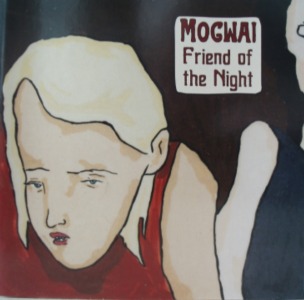
Friend of the Night and Travel Is Dangerous – PIAS UK, 2006
Highlights: “Auto-Rock (Errors Remix)”
Low Points: “Like Herod (Live)” is better elsewhere
Overall: I’ve lumped together the two import-only singles from Mr. Beast, even though they have never been compiled as such. (You’ll have to wait until 2016’s deluxe edition of the album for that to happen.) Friend of the Night features two original b-sides, whereas Travel Is Dangerous offers two remixes and two live tracks. In 1997 I called these things CD5s, but apparently Travel Is Dangerous qualifies as an EP. We’ll see about that, Mogwai.
The two b-sides from Friend of the Night are perfect companion pieces for Mr. Beast, but not quite good enough to merit padding that album’s tidy runtime. “Fresh Crown” combines gentle piano, drum machine, and carefully pruned guitar feedback into a lovely package that ends all-too suddenly. “1% of Monster” pulls a familiar melodic pattern out of whirring noise and heavier drum pattern, recalling a more controlled version of “Superheroes of BMX.” Is it strange that these songs remind me most of earlier Mogwai b-sides?

On the surface, Travel Is Dangerous is considerably less essential. Two remixes and two live takes, one of which is of “Like Herod,” which you can find in excellent versions on both Government Commissions and Special Moves. Yet the Errors remix of “Auto Rock” is a personal favorite, a natural incorporation of Mogwai’s stoic piano opener into Errors’ dance-friendly electronic post-rock. Hopefully it encourages you to track down Errors’ two LPs and EP, all released on Mogwai’s Rock Action label. Acid Casuals, a side-project of Welsh rockers Super Furry Animals, provide a playful remix of “Friend of the Night” that floats by calmly. As for the live tracks, I have little need for another take of “Like Herod,” while “We’re No Here” isn’t noticeably different.
“Fresh Crown,” “1% of Monster,” and the Errors remix of “Auto Rock” are all fine, but let’s be honest: neither of these singles offers anything as revelatory as “Superheroes of BMX,” “Small Children in the Background,” or “Stanley Kubrick.” Don’t feel any rush to track them down. Waiting until 2016 might be a prudent decision. In the meantime, check out Errors.
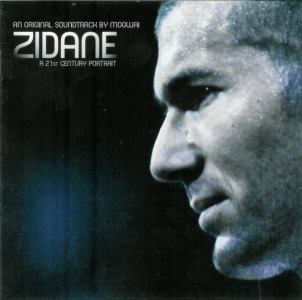
Zidane: A 21st Century Portrait – PIAS UK, 2006
Highlights: “7:25,” “Half Time,” “Black Spider”
Low Points: “Terrific Speech,” “Time and a Half”
Overall: I’ve spent less time with Mogwai’s soundtrack for the documentary film Zidane: A 21st Century Portrait than any of their LPs. Its initial import-only release postponed my purchase of the album, only to later learn that the vinyl would never come stateside. I got a burned copy of the similarly import-only film from a friend, but my lone viewing of it didn’t floor me. Had I been a bigger fan of soccer/football at the time, perhaps it would have made more of an impression. But Mogwai’s soundtrack works best in conjunction with the film, not separated from it, so listening to it as a stand-alone album is an uphill battle.
This soundtrack’s foremost limitation is simple: it only shows the reserved, often minimal side of Mogwai. The “Rollerball,” “Burn Girl Prom Queen,” “Helps Both Ways,” “Emergency Trap,” “New Paths to Helicon (Part Two)” side. I enjoy that side of Mogwai’s music, but not exclusively. Think back to the stretch of Come on Die Young that lingers too long on mid tempos and clean guitar lines. I needed variety then, and I need it even more now. Mogwai’s Zidane soundtrack is 74 minutes long with the emphasis on long.
Repeated musical themes makes perfect sense for a film, but as an album, such repetition is tiresome. Here you have “Black Spider” and “Black Spider 2.” “Terrific Speech 2” and “Terrific Speech.” “Half Time” and “Time and a Half.” These aren’t vastly different versions. They reuse the same melodic phrasing, the same minimal arrangements. In the case of “Terrific Speech,” I was tired of its warbling organ, distant drumming, and repeated arpeggio the first time around.
Taken individually, however, many of these songs impress. “Black Spider,” originally a Rock Action outtake, recalls the quieter passages of Come on Die Young with its delicate guitar lines, but it’s the most melodically haunting piece here. The fuzz of “Wake Up and Go Berserk” envelops its acoustic guitar picking and stray piano lines, casting aside Mogwai’s usual adherence to structure. “7:25,” a Come on Die Young leftover, passes its layered guitar lines through a warm glow (and thankfully only runs 5:13). “Half Time” turns haunting guitar feedback and introspective piano into a mesmerizing semi-crescendo. “I Do Have Weapons” won’t make any hearts race, but its careful arrangement of back-masked notes, guitar arpeggios, and organs is charming. Put these five understated songs on an EP and it’s suddenly a regular spin.
The elephant in the room is the untitled hidden track that follows “Black Spider 2.” Its twenty-two minutes could be viewed as an ultra-elongated version of “It Would Have Happened Anyway,” but the formless drone has few other points of comparison in Mogwai’s catalog. A quieter version of the climax to “Stereodee,” perhaps? Eventually a pounding drum finds its way through the mist and a single organ line clears things out, but soon enough the washes of guitar noise return. This piece is more akin to Tim Hecker’s ambient noise symphonies or Sonic Youth’s SYR2 than Mogwai’s regular material. Unlike Hecker’s best work, I can’t imagine returning to this untitled track with much frequency.
The obvious advice to hear Mogwai’s music in its proper context first by seeing the documentary Zidane: A 21st Century Portrait may not have worked for me, but I still believe it’s the best course of action (especially if you’re fond of the sport). Do that, then come back to the soundtrack and pick through the debris for the winners. If you view this soundtrack as an excellent, mellow EP with some alternate takes instead of one long piece of music, you’ll be happier with the results.
|
|
Believe it or not, I'm deadset on finishing this Discographied run soon and moving onto my next selection. If you'd like to catch up, part one covers Ten Rapid and the 4 Satin EP, part two covers Young Team and Kicking a Dead Pig / Mogwai Fear Satan Remixes, part three covers the No Education = No Future (Fuck the Curfew) EP and Come on Die Young, part four covers the Mogwai EP and their entry in the Travels in Constants series, and part five covers Rock Action and My Father My King. This entry covers the disappointing, if not disastrous Happy Songs for Happy People and the pleasantly surprising Government Commissions: BBC Sessions 1996-2003
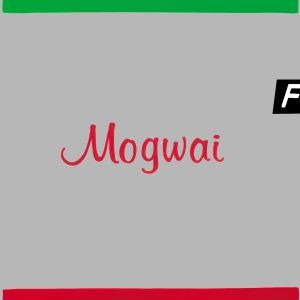
Happy Songs for Happy People – Matador, 2003
Highlights: “Stop Coming to My House,” “Hunted by a Freak”
Low Points: “Boring Machines Disturb Sleep”
Overall: I had a very, very brief stint writing for Stylus back in 2003, highlighted by a takedown of Liz Phair’s disastrous eponymous effort and done in by the boneheaded decision to review 57 lingering promos from the Signal Drench days (which remains one of my favorite pieces I've done). One of the few new albums I reviewed was Happy Songs for Happy People, which I gave a B-, claiming that “These Happy Songs are fine, but […] praising competence is a backhanded compliment. The highlights would be far better suited to lesser status on a great album, and turning away from the impressive vocal performances of Rock Action to fully retreat into vocoders and hushed mumbling is a step backwards.” I stand by both the grade and the sentiment (skip down four paragraphs for more detail), but there’s an interesting wrinkle. As Stylus often did, there was a second review published for the album, in which Olav Bjortomt awarded it an A. That’s not surprising—certain people claim that Happy Songs is the group’s best album—but it’s not consistent with his back-and-forth throughout the review.
Bjortomt’s review starts off with the admission that every Mogwai album, barring Ten Rapid, disappoints him. Then admits, “They're my favourite band.” After finding the flaws in Mogwai’s first three full-lengths, he comes clean: “At the time I gave the last two glowing write-ups when reviewing them. I was wrong on both counts. I had let my loyalty afflict my impartiality.” This time he vows, “I will cast a cold, unflinching eye” and proclaims, “This is set filler for the new tour.” After praising every single track, he goes broad again: “Mogwai have an album in them, capable of delighting and shocking us, of smashing our craniums in and injecting heroin in our mushed-up brains, then chucking us in a filthy ditch, left to gaze in retarded wonder at the fireworks exploding in the brooding sky.” He realizes that their eventual greatest hits compilation, which he titles “ The Greatest Fucking Record That Kicked Your Ass and Stroked Your Head Like a Puppy,” will be that album. Bjortomt concludes, “Happy Songs is a great album, but not THE great Mogwai album.”
And yet, still an A.
I’ve gone through Bjortomt’s waffling not to show him up or claim review supremacy seven years later, but to empathize with him. When reviewing your absolute favorite band, it’s nearly impossible to prevent loyalty from affecting impartiality—even when you know better. When I reviewed Shiner’s Starless for Signal Drench, I gave it the five-star treatment. With time, I recognized that Starless was a transitional album for the group. Every time I’ve written about Juno’s A Future Lived in Past Tense, which still stands as my favorite album ever, I consciously avoid mentioning how I view the atmospheric short story reading “Things Gone and Things Still Here (We’ll Need the Machine Guns by Next March)” as an optional piece of the track listing. I’m loyal to both of these bands, too loyal for immediate critical impartiality. Bjortomt’s review is a compelling document of this process. Even when he recognizes the album’s flaws, it’s still an A album. “It’s a Mogwai album,” after all.
And finally I’ll get back to that very statement. As the pull quotes from both reviews have established, Happy Songs for Happy People isn’t an album of hall-of-fame material, but it has its charms. Only two of its songs—“Hunted by a Freak” and “I Know You Are but What Am I”—made the live album Special Moves, which is the closest thing the band’s released to a greatest hits compilation, and neither is of the jaw-dropping epic variety. Breaking the album down, there’s an affecting vocoder-driven song in “Hunted,” two minimal, subtle synth-fests in “Moses I Amn’t” and “Boring Machines Disturb Sleep,” a lush mid-tempo song in “Golden Porsche,” a layered piano ballad in “I Know You Are,” one eight-minute epic in “Ratts of the Capital,” which crests admirably but never goes into Mogwai’s top gear, and three condensed takes on the Mogwai epic: “Kids Will Be Skeletons,” “Killing All the Flies,” “Stop Coming to My House.” It’s a tight 42 minute album with a few relative highs and no major missteps. To revive a confounding bit of grade hedging I learned back in graduate school, I’ll bump my previous score up to a B-/B.
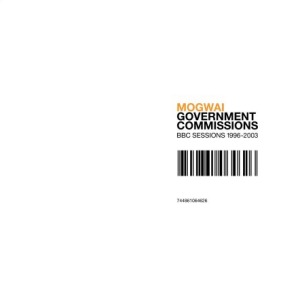
Government Commissions: BBC Sessions 1996-2003 – Matador, 2005
Highlights: “Like Herod,” “Secret Pint,” “Cody,” “Stop Coming to My House”
Low Points: “Kappa,” “Hunted by a Freak”
Overall: This non-comprehensive collection of BBC sessions occupies a curious spot in Mogwai’s discography. Is it their first official live album? Not quite—many of these performances display the control of an in-studio session. Is it a collection of alternate takes? Almost—some songs certainly vary from their original versions, even improving upon them in a few instances, but others are carefully recreated. Is it a best-of sampler? Not without versions of “Mogwai Fear Satan,” “2 Rights Make 1 Wrong,” and “Stanley Kubrick.” Government Commissions is somewhere between these three points, offering newcomers a sampling of Mogwai’s work and existing fans fresh takes of songs they know.
It begins with the voice of the sadly departed John Peel ushering in “Hunted by a Freak.” It’s a fine version of one of the highlights from Happy Songs for Happy People, but along with Come on Die Young’s “Kappa,” it’s one of the least surprising (and therefore least necessary) versions here. Young Team’s “R U Still in 2 It” pulls the easy trick of removing Aidan Moffat’s vocals and going instrumental, but its drifting outro is downright lovely. Ten Rapid’s “New Paths to Helicon (Part II)” goes pro, exchanging the minimal presentation of the original version for a more elegant, piano-laden approach. After the shrugging version of “Kappa,” Mogwai keeps with Come on Die Young for a pitch-perfect take on “Cody.”
To this point, Government Commissions has been remarkably reserved, hitting only the chorus crescendo of “Hunted by a Freak,” but the live version of Young Team’s mammoth “Like Herod” takes little time to send out its hulking riffs. There’s no shortage of live versions of “Like Herod” in Mogwai’s catalog—see also the deluxe edition of Young Team, the Travel Is Dangerous EP, and the live album Special Moves—but this take is the keeper. The first time I saw Mogwai was September 10, 1999 at the Metro in Chicago and they closed with “Like Herod.” The trick wasn’t going quiet then loud, but making the loud progressively louder to the point of discomfort. By the end of the song, Stuart Braithwaite had two drum sticks and an action figure lodged in his guitar. Despite the brazen stupidity of not wearing earplugs, I loved every second of that performance, pumping my fist in the air as those wiser individuals around me covered their ears in panic. Unlike the studio version of “Like Herod,” the Government Commissions version gives you a taste of that terrifying torrent of noise. (Necessary postscript: both my ride, the esteemed Jared Dunn, and I felt downright disoriented after the show, which resulted in an disastrous journey back to Champaign. It’s a bad sign when you realize you’re in the wrong state. This anecdote has now become outdated in the age of GPS.)
It amuses me that “Secret Pint” follows such a monumental performance, much like it did on Rock Action, but here the song is up to the task. The instrumental balance is much improved, adding harmonics, downplaying the drums, turning the woozy strings into an affecting cello performance, and smoothing things over with a blissful hum reminiscent of Ten Rapid. What was one of my least favorite songs on Rock Action becomes one of my favorites here.
“Superheroes of BMX” from the 4 Satin EP makes a welcome appearance, not straying too far from the course of the original but finding new streaks of noise to run across the placid baseline. “New Paths to Helicon (Part One)” hits new heights of distorted bliss, extending the superb original take for another two minutes. And closing track “Stop Coming to My House” from Happy Songs for Happy People feels unleashed here, trading the production subtleties of the original for direct power.
The only downside to Government Commissions is the “non-comprehensive” tag I mentioned earlier. Being favorites of John Peel meant that Mogwai appeared a number of times, documented quite well on this site. It’s unfortunate that the links for that site’s unofficial Government Commissions 2 no longer work, since those excluded songs are still worth hearing. The biggest omission from the original compilation is a cover of Guns ‘n’ Roses’ “Don’t Cry” recorded for the February 17, 1998 show. Along with “Spoon Test,” which morphed into the middle section of “May Nothing but Happiness Come Through Your Door,” it’s the only song that didn’t appear elsewhere. Plus, Stuart Braithwaite’s earnest, emotional vocal and the rousing solo both stand up.
Frankly I’d forgotten how good Government Commissions is. The first half of the album and “Secret Pint” demonstrate Mogwai’s quieter side as well as any of their albums, while “Like Herod,” “Helicon (Part One),” and “Stop Coming to My House” show off the energy of their live sets. No, it’s not a proper live album, a collection of thoroughly alternate takes, or a best-of compilation, but it combines aspects of each to claim its place as a necessary piece of Mogwai’s catalog.
|
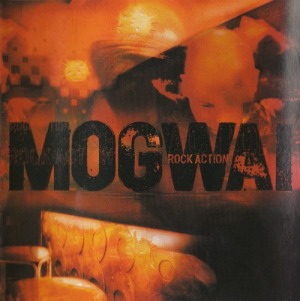
Rock Action – Matador, 2001
Highlights: “2 Rights Make One Wrong,” “Sine Wave,” “Dial: Revenge,” “You Don’t Know Jesus”
Low Points: “Robot Chant,” “Secret Pint”
Overall: Rock Action marks the start of a new era for Mogwai LPs. Gone are the hour-long runtimes. Rock Action clocks in at a tidy thirty-eight minutes. Its eight songs include a pair of minute-long snippets: the back-masked piano ballad “O I Sleep” and the industrial fuzz of “Robot Chant.” Subtract those and you’ve got six songs, thirty-six minutes. I can’t help but think of other albums in the “six songs, roughly forty minutes” club: Talk Talk’s Laughing Stock, Slint’s Spiderland, Rodan’s Rusty, and Tortoise’s Millions Now Living Will Never Die. You were so close, Mogwai. So close.
Decrease in runtime isn’t the only major change. Of the six full tracks, five of them have vocals of some sort (frequently hidden in a vocoder). Only “You Don’t Know Jesus” qualifies as “rocking.” “Sine Wave” has squelching electronic noise reminiscent of IDM. “2 Rights Make 1 Wrong” has prominent banjo, strings, and brass, and concludes with a four-person choral arrangement. This emphasis on additional instrumentation didn’t happen overnight. Dave Fridmann applied horns and strings to Come on Die Young. These elements became central parts of their songs on the Mogwai EP. But on Rock Action, these decisions steer songs in new directions.
The songs are still Mogwai songs, though. A top-down view of “Sine Wave” shows a gradual crescendo, even if its sonic profile is nothing like “Yes! I Am a Long Way from Home.” The throbbing drums, muffled vocals, and buried melodies of “Sine Wave” may sound little like what came before them, but the effect is still the same. “Take Me Somewhere Nice” revives an atypical Mogwai blueprint—the vocal-driven slow-core of “Cody”—and weaves horns and strings around a regretful Stuart Braithwaite vocal. Super Furry Animals frontman Gruff Rhys helms “Dial: Revenge,” layering Welsh vocals around acoustic guitars and yearning strings. If not for the familiar emotional palette, you might wonder which band recorded that song. “You Don’t Know Jesus” reorients the listener back into the world of dimly lit instrumental rock, recalling Come on Die Young’s excellent “Ex-Cowboy.” What it lacks in surprises it makes up for in craftsmanship—few of Mogwai’s dynamic rock songs are this carefully planned and precisely executed.
Those four songs would comprise a very nice EP, but Rock Action becomes a bona-fide full-length with its penultimate song, “2 Rights Make 1 Wrong.” Like “Mogwai Fear Satan” on Young Team, “2 Rights” comprises a quarter of Rock Action’s runtime. I mentioned the song’s instrumental arrangement earlier—banjo, strings, brass, electronics, vocoder, a four-part chorus—but what I didn’t emphasize is the effect of all of these pieces. “2 Rights Make 1 Wrong” hits several awe-inspiring peaks—the rousing brass crescendo in the song’s first half, the quiet mingling of Barry Burns’ vocodered voice and the insistent banjo melody in the song’s introspective valley, and the unexpected beauty of the crossing voices in the choral outro. Here’s the amazing part: none of them are guitar-driven. Credit producer Dave Fridmann for pulling all of these pieces together, but also credit Mogwai for recognizing a simple fact: these moments all sound better with this alternate instrumentation. The song is still fantastic in the guitar-driven live setting, but as a studio recording, it ranks at the very top of Mogwai’s best work.
Rock Action closes with “Secret Pint,” which lingers in the wake of “2 Rights Make 1 Wrong.” Don’t expect guitars to dominate here, either. Stuart Braithwaite’s mumbled vocal, up-front drums, lingering piano, and occasional strings all take precedence over the quietly strummed guitars. My preference would be to close Rock Action with the uplifting finale of “2 Rights Make 1 Wrong,” not give it a reserved coda. It certainly is strange that once I finish praising Fridmann for his superb job elevating “2 Rights Make 1 Wrong” with his production touches, “Secret Pint” feels overwhelmed by them. I greatly prefer the version included on Government Commissions, but I’ll get to that one later.
Rock Action ranks as my second favorite Mogwai full-length behind Young Team. I can certainly understand the logical slights against the album—it’s close to EP length, it doesn’t feature as much guitar rock as their other albums, the emphasis on vocals gets them away from their usual strengths—but for the most part, I view each of those points as a blessing. The last thing I wanted following Come on Die Young was another sprawl-heavy double album. After the excellent Mogwai EP, I recognized Mogwai’s capacity to write music that didn’t require a crescendo into distorted guitar to succeed. Songs like “Cody,” “R U Still in 2 It,” and “Tuner” demonstrated Mogwai’s aplomb for a variety of vocal approaches, so the array of voices on Rock Action isn’t some unforeseen outlier. It certainly doesn’t hurt that one of my two favorite Mogwai songs, “2 Rights Make 1 Wrong,” holds the album together. It’s the start of a new era of shorter, tighter Mogwai albums, but it stands apart from Happy Songs for Happy People and Mr. Beast in quality and approach.
Despite this praise, I have a major qualifier for Rock Action: don’t start here. Know the norms first so you can appreciate how Rock Action deviates from them (precisely what post-rock should do). Check out Young Team, Mogwai EP, and one of the live compilations, then come to Rock Action and it’ll be a breath of fresh air.
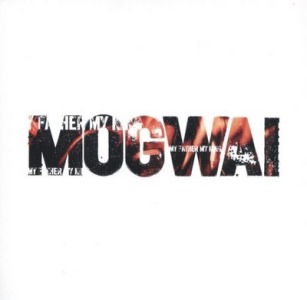
My Father My King – Matador, 2001
Overall: Warning: The majority of this entry on Mogwai’s “My Father My King” is a screed against the production values/decisions for the song. Let me not forget to emphasize that “My Father My King” is a completely badass, inspired song that you definitely need to hear in some capacity. If not for those production issues, it would be firmly among “Mogwai Fear Satan” and “2 Rights Make 1 Wrong” in the holy trinity of Mogwai epics. Now let the diatribe begin.
I rarely take issue with Steve Albini’s engineering jobs. He’s done absolutely perfect work on albums like the Jesus Lizard’s Goat, Silkworm’s Firewater, Shellac’s At Action Park and The Forms’ self-titled LP. You know what you’re going to get with Albini: a remarkable replication of what it’s like to be in the room while the band is playing. Whether that result fits a band’s sound, however, is the rub. Two conditions have to be met: first, you have to sound good in the room, i.e. be a “tight” live band; second, it’s best if you don’t use the studio as an instrument, Eno-style. It’s the second condition where My Father My King falls short, which is an ironic turn of events.
An emphasis on the “studio as an instrument” approach is the defining aspect of producer Dave Fridmann’s stint behind the boards for Mogwai’s previous two full-lengths. What works so well for the Flaming Lips, Mercury Rev, and the Delgados—an up-front drum sound, space for additional instrumentation like horns and strings, electronic flourishes—has mixed results for Mogwai. Sometimes it excels (“Cody,” “Sine Wave,” especially “2 Rights Make 1 Wrong”), sometimes it overwhelms the song (“Helps Both Ways,” “Secret Pint”). My general feeling is that Mogwai were pushed too close to the orchestral rock of Fridmann’s usual clientele, a movement away from their core identity as a guitar-rock band. “My Father My King” is a response to that, a twenty-minute reassurance that they are, in fact, a guitar-rock band, even if its initial potential looked past that distinction.
I first heard “My Father My King” on a webcast of the group’s All Tomorrow’s Parties performance from 2000 (download the mp3 of that performance here). Bolstered by a string trio, Mogwai added another dynamic, eardrum-crushing epic to their repertoire. Basing the song’s melody on the Jewish prayer Avinu Malkeinu (“Our Father Our King”), Mogwai strayed from their usual melodic progressions and gave the adapted hymn an apocalyptic resonance, especially when those strings picked up. The guitars did much of the heavy lifting, taking over the song for stretches, but it was the presence and prominence of the string section that hooked me, offering counter-melodies that pierced through the thick cloud of distortion. When they picked up the main melody over the rumbling noise of the song’s outro, gradually falling more and more out of tune, I couldn’t help but wonder how jaw-dropping it would sound not coming from RealPlayer. Nevertheless, I played that cached stream on a near-constant loop for months.
The one-track CD single for “My Father My King” (hear the first part on YouTube) came out six months after Rock Action. Most reviews were positive, calling it a perfect companion piece for the atypically reserved Rock Action and the monolith that album was lacking (you know, if “2 Rights Make 1 Wrong” doesn’t count). I took it a different way: Steve Albini sucked the life out of this song.
That’s not a fair statement, since Albini did what Albini does: replicate the sound in the room. The guitars and bass sound downright venomous, undulating in waves of writhing distortion. The drums sound fine, but Martin Bulloch isn’t as forceful as Albini regulars like Silkworm’s Michael Dahlquist (rest in peace), Shellac’s Todd Trainer, or the Jesus Lizard’s Mac McNeilly. The problem is with the string section. Regular Mogwai collaborators Caroline Barber (cello) and Luke Sutherland (violin) must’ve been set up down the hall, since their presence on the track is so greatly diminished from that All Tomorrow’s Parties performance.
Here’s where Albini’s distinction as an engineer, not a producer, comes into play. As an engineer, he sees Barber and Sutherland walk into the studio, mics their instruments, and records their performance. An engineer wouldn’t insist on multi-tracking the strings for added prominence, bringing in an additional string quartet, or contracting a local orchestra. A producer, on the other hand, might suggest those possibilities. A producer like Dave Fridmann, perhaps? I suspect that a Fridmann recording of “My Father My King” would have the opposite problem of Albini’s take. Yes, the strings would be more prominent, but the guitars wouldn’t have the bite of Albini’s recording. “My Father My King” would not work if it sounded anything like the Flaming Lips or Mercury Rev.
The point of releasing “My Father My King” separate from Rock Action was to show a separate side of Mogwai, the dissonant, noisy side, and to their credit, that’s what Albini’s version does. What the All Tomorrow’s Parties performance, out-of-tune strings and all, argues is that showing one side or the other of Mogwai’s aesthetic profile precludes the possibility of showing both sides. I want the nasty guitar noise, but I also want the bombast of a prominent string section. If you’re recording a twenty-minute-long instrumental with apocalyptic overtones, why hold back? Were they afraid of sounding too much like Godspeed You Black Emperor? Maybe I’m spoiled by the resonance of the first version I heard (it wouldn’t be the first time that’s happened with Mogwai), but I find myself going back to that version. The point that shouldn’t be overlooked (hence the preface to this entry) is that I am going back to some version, proving that “My Father My King” remains one of Mogwai’s most impressive compositions.
An interesting postscript to this discussion of Mogwai’s production values. They haven’t gone back to a name producer / engineer since “My Father My King,” choosing to record their next four official LPs and the Zidane soundtrack with fellow Scotsmen Tony Doogan, Andy Miller, and Paul Savage (the former drummer of the Delgados who’s also done excellent work with Aereogramme, Arab Strap, and the Twilight Sad). Miller and Savage handled Young Team and much of the other early Mogwai material. Mogwai also built their own studio, Castle of Doom, and have done recording and/or mixing for their most recent albums in it. While I mostly enjoy the production values that these three men have brought to the more recent Mogwai material, I do wonder what they’d sound like with a more hands-on producer brought into the fold.
|
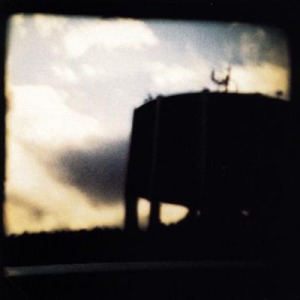
Mogwai EP – Matador, 1999
Highlights: “Stanley Kubrick,” “Burn Girl Prom Queen”
Overall: I realized something as I put on the Mogwai EP, which I’ve long heralded as one of their finest releases, shortly after listening to Come on Die Young, which I view as one of their biggest disappointments: They’re not all that different. Both releases emphasize lush arrangements and measured tempos over striking dynamic shifts and orgiastic guitar ecstasy. From a distance, the Mogwai EP resembles that dreaded tract of mid-tempo songs that bogs down the middle of Come on Die Young. Yet now it’s grand instead of tedious. Mogwai returned to my mental picture of Come on Die Young as a dreary, grey November afternoon and changed the seasons, opting for early spring or late fall.
How did they do it? Simple: the lush arrangements are now central to the songs. Whereas the horn arrangements on “Helps Both Ways” could have been dropped (and were absent on the original No Education version), the horns on “Burn Girl Prom Queen” are essential. The piano, guitar, and bass create a fine base underneath, but those horns make the eight minutes float by. Similarly, I can’t fathom “Stanley Kubrick” without its pedal steel melody or the evocative whirring texture of the keyboards. Those elements generate the song’s indelible sense of melancholy. “Christmas Song” starts out solely with piano, bringing guitar harmonics and canned strings in to supplement this foundation, but I find myself focusing on the piano. Perhaps the most stunning aspect of Mogwai EP’s success is how the only song with a noisy pay-off, the accurately titled “Rage: Man,” is the least satisfying track here. It’s still a carefully crafted song that fits in well with the three which proceed it, but how times have changed when I’m wishing for more lush, mid-tempo material.
As I mentioned with both 4 Satin and No Education = No Future (Fuck the Curfew), you will rarely encounter just the four songs discussed above on the Mogwai EP. Matador’s US pressing was EP+2, placing “Rollerball” and “Small Children in the Background” from No Education after “Rage: Man.” The Japanese pressing and Chemikal Underground reissue is EP + 6, arranging the three EPs in chronological order. Logistically, EP + 6 is the way to go (currently $13.50 at Parasol), but personally, I prefer how EP + 2 concludes with “Small Children.” Either way, I rank these three EPs above a few of Mogwai’s LPs, so don’t miss out on them. Certainly listen to each on its own accord, however, since this chronological discussion stressed just how important each EP was to that stage of Mogwai’s development.
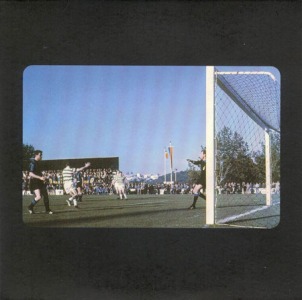
Travels in Constants, Volume 12 – Temporary Residence Limited, 2001
Highlight: “Untitled”
Overall: Subscription-only series used to be a big deal. The Sub Pop Singles Club helped put that label on the map in 1988—even if Nirvana’s Bleach and subsequent trickle-down Geffen money draped that map in flannel—and roughly a decade later, Temporary Residence Limited’s two subscription series put them on an admittedly much smaller map. Sounds for the Geographically Challenged featured artists like Songs: Ohia, The For Carnation, Fuck, and The Sonora Pine—not huge names in the indie rock universe, but respectable nonetheless. The subsequent Travels in Constants series scored coups with Papa M, Will Oldham, Low, and Mogwai. TRL’s own Eluvium, Explosions in the Sky, and Mono helped close out the series in 2007. Sure, stellar albums like Tarentel’s From Bone to Satellite (which compares admirably to the vast majority of Mogwai’s catalog) helped solidify TRL’s own stable of artists along the way, but it’s impossible to diminish the importance of these series, especially Travels in Constants, for the label’s ultimate success.
Such series are built upon the intoxicating sense of exclusivity. Maybe there’s a band in the queue that’s one of your favorites and you need every last song they release. Maybe you’re interested in making a killing on eBay. Maybe—ideally—you’re intrigued by the label’s sense of direction and want to hear a consistent stream of its chosen tunes. Whatever the justification, these subscriptions allow labels the guaranteed capital to get off the ground, associate bigger names in the genre with them, and encourage you to check out the non-subscription titles. The biggest hurdle is the lump-sum price, something I was never willing or able to pay, but fortunately a few titles slipped through to touring artists like Mogwai.
As romantic as I make these subscription series out to be, such releases are frequently a dumping ground for lesser material. Think about it from the artist’s perspective: are you going to give some up-and-coming label your best new tracks or are you going to save them for your next album? The vast majority of groups will use the subscription release as a chance to clear out their closet or perhaps try a new direction. While I enjoy all three tracks on Mogwai’s Travels in Constants, I can’t argue that this EP is comprised of their top material.
The gentle “Untitled” is the best of the bunch, a pleasant six minutes of floating guitar noise, nonchalant la-la-las, and inviting keyboard and flute melodies laid over a steady beat. If you’re hoping for tension, look elsewhere, but “Untitled” is a welcome addition to the Sunday afternoon playlist. The other two songs are immediately recognizable as b-sides: there’s a “quiet” version of “Stereodee” from the 4 Satin EP and a cover of Papa M’s “Arundel.” The former replaces the reverbed guitar of the original take with a graceful piano. It’s an intriguing trade-off, but not revelatory. Choosing to cover Papa M is a bit curious—yes, David Pajo was in Slint, but as Papa M he’s Mogwai’s peer. “Arundel” lacks the bravado and history of their earlier Black Sabbath, Guns ‘n’ Roses, and Spacemen 3 covers, but the end result is a stately bit of piano to close out the EP.
Perhaps Mogwai’s Travels in Constants nails the quality vs. exclusivity debate on the head. If you’re a Mogwai fan willing to hunt down a long out-of-print EP, these three songs offer a nice enough reward. If you’re less dedicated, you’re not missing out on anything essential. And if you subscribed and don’t care about Mogwai, you just made some money on eBay.
|
Tarentel – We Move Through Weather 2LP – Temporary Residence, 2004 (9/17 Charlie Wagner)
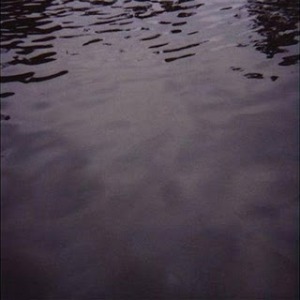
Hearing this album again in the midst of my deep-dive into Mogwai’s discography makes me wonder if I chose the wrong group to spotlight. Tarentel received comparisons to Mogwai when 1999’s From Bone to Satellite was released, which both made sense—both groups plied their trade in guitar-centric post-rock—and sold Tarentel’s emerging drone and ambient tendencies short. Whereas Mogwai’s more recent albums are essentially a refinement of their 1999 release, Come on Die Young, Tarentel’s much more severe evolution has laid waste to the careful arrangements and distorted build-ups of From Bone to Satellite. I personally prefer the more familiar terrain of From Bone to Satellite and the superb compilation Ephemera to Tarentel’s later, more challenging work, but the elegant atmosphere of 2001’s The Order of Things, the rhythmic drone of 2004’s We Move Through Weather, and the psychedelic blur of 2007’s Ghetto Beats on the Surface of the Sun each offer a decidedly different take on Tarentel.
If each of these releases sounds like the product of a different band, that’s not entirely off-base. Only Jefre Cantu-Ledesma and Danny Grody remain from the Satellite line-up for We Move Through Weather, with the prolific Kenseth Thibodeau having departed for projects like Sleeping People, Howard Hello, and Prints. Two of the additions signal changes in Tarentel’s sonic profile, since Tony Cross is credited with violin, waterphone, and hydrophone, while Steve Dye is credited with bass clarinet, clariphone, flubaphone, gankogui, and double ski horn (some of which are custom-made instruments). Former Sonna drummer Jim Redd makes the biggest difference, since his bustling tribal rhythms are pushed up front for “Bump Past, Cut Up Through Wind,” “A Cloud No Bigger Than a Man’s Head,” and “Hello! We Move Through Weather.”
If you’re hoping to hear “For Carl Sagan, Part Two,” look elsewhere. This emphasis of droning horns and tribal rhythms over discernible guitar figures distances We Move Through Weather from both From Bone to Satellite and The Order of Things. Melody is hard to come by, with the minimal piano work of “Bump Past” and “We’re the Only Ghosts Here” providing welcome exceptions to this rule. Instead, We Move Through Weather turns its countless instrument credits into a disorienting fog with few paths out. Specifying the title not as “We’re moving through this cloud” but “We’re moving through use of this cloud” clarifies things slightly, but We Move Through Weather does not value clarity.
I’ll return to my original thought on whether Tarentel Discographied would be more rewarding than Mogwai Discographied with an epiphany: Tarentel’s discography is already set up perfectly for a chronological exploration. You start with the structured post-rock of From Bone to Satellite, which presumably appeals to the widest audience. If you’re still interested, Ephemera collects a number of rewarding variations on this template. Next, you cast aside the crescendos for the ambient The Order of Things. Like to take that ambience a step further? Get weirder? Try out the miasmic We Move Through Weather. Still on board? Well, Tarentel’s got four twelve-inches of drifting psychedelic fuzz for you with Ghetto Beats from the Surface of the Sun. It’s hard to extract a single, monumental song from We Move Through Weather to use as a signpost of their progress—there’s no “2 Rights Make 1 Wrong” here. Unlike Mogwai, Tarentel don’t have song types like “the vocal slow-core ballad,” “the moody crescendo crasher,” or “the mellow, vaguely electronic breather.” Tarentel doesn’t return to what worked before or improve on past attempts. They just move forward.
|
|

